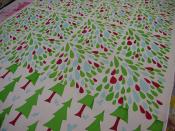The purpose of this paper is to answer questions about various data input and output methods, various storage types and devices, and the speed of a computer. Each of the four questions is divided into a corresponding section below. In the input device section, this paper focuses primarily on user input, rather than the input devices used to extract information entered by a user. In all of the presented cases, electronic scanning methods are the best method, and the method routinely used, to extract data and store it in repositories for compilation and analysis.
Input Scenarios
Printed questionnaires and telephone surveys are commonplace in today's poll-obsessed society. Today, individuals may receive questionnaires from sources ranging from the Census Bureau to Sears to AC Nielsen. Organizations deliver these questionnaires in a variety of formats and lengths, and require answers that use disparate measurement scales from Likert (bipolar) to unstructured. The style of survey used by an organization will vary greatly based on the subject matter and the goal of the survey.
Among the most popular assessments tools of service quality (a common questionnaire/survey topic) is SERVQUAL, an instrument designed by Berry, Parasuraman, and Zeithaml (1994). Through numerous qualitative studies, they evolved a set of five dimensions ranked consistently by customers as central to service quality, regardless of the service industry.
Most questionnaires and surveys use both bipolar Likert/dichotomous and unstructured questions to allow the surveyor to benefit from the strengths of both quantitative and qualitative research. The use of quantitative questions allows surveyors to obtain a high degree of reliability and validity using the scientific method, and enables others to more easily repeat or replicate the study. The qualitative questions provide background for customer responses, and help to identify any underlying issues highlighted by the quantitative research. Triangulation, in this case...


